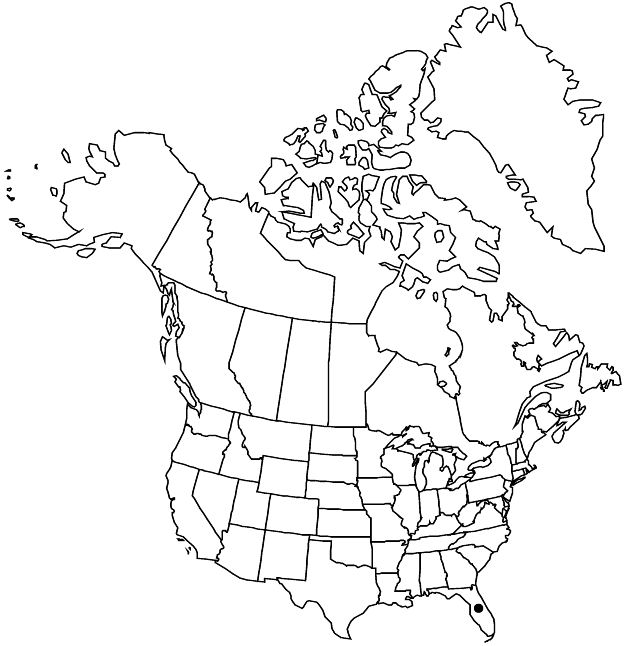Difference between revisions of "Triumfetta pentandra"
in J. B. A. Guillemin et al., Fl. Seneg. Tent., 93, plate 19. 1831.
FNA>Volume Importer |
FNA>Volume Importer |
(No difference)
| |
Revision as of 22:44, 16 December 2019
Herbs, annual. Stems erect, branched, 2.5–6 dm, stellate-pubescent. Leaves: petiole 1–5 cm; proximal blades rhombic-ovate, palmately 3-lobed, 4.5–9 cm, distal ovate-lanceolate, not lobed, base cuneate to obtuse, margins unequally coarsely serrate, apex acute to acuminate, surfaces: abaxial moderately hairy with mix of stellate hairs (laminae) and simple hairs (veins), adaxial sparingly simple-hairy, 5-veined from base. Inflorescences mostly 2 or 3 per axil, often subspicate; peduncle 1–2 mm. Pedicels 0.5–1 mm. Flowers: sepals narrowly oblong, subapically appendaged, 2–3 mm, sparsely stellate abaxially; stamens 5(–10); ovaries 2-locular. Capsules ovoid, 2.5–3 mm, surface densely tomentose; spines uncinate, densely hirsute on 1 side.
Phenology: Flowering Aug–Sep.
Habitat: Disturbed sites, roadsides, pastures, ditch banks
Elevation: 10–50 m
Distribution

Fla., Africa, introduced also in South America, Asia (India, Pakistan, Sri Lanka, Taiwan), Atlantic Islands (Cape Verde Islands), Australia.
Discussion
Triumfetta pentandra is known from Baker and DeSoto counties.
Selected References
None.